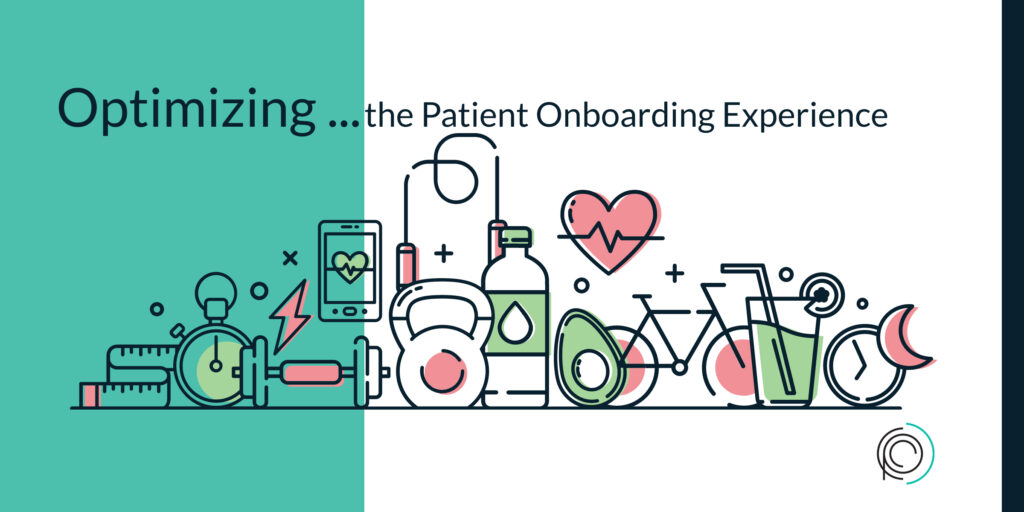The process of onboarding patients has historically been a time-consuming and exhaustive task. Each step involved in this process requires painstakingly gathering various forms of information, meticulously checking for accuracy, manually entering data into the system, and ensuring the utmost confidentiality of patient records. The consequences of any delays or mistakes could be significant, leading to patient frustration, missed appointments, or even a loss of business. However, with the rapid advancements in healthcare technology, there is now a solution to alleviate these burdens. Automation and streamlined systems can now be implemented to optimize the patient onboarding process, offering immense benefits such as saving valuable time, enhancing overall efficiency, and ultimately improving the patient experience as a whole. By embracing these technological upgrades, healthcare providers can now focus more on delivering quality patient care rather than getting caught up in administrative tasks.
1.Implementing a paperless registration system
Implementing a paperless registration system can revolutionize the patient experience at hospitals and clinics. Traditionally, patients are required to spend valuable time in the waiting room filling out numerous pieces of paperwork, which can be overwhelming and time-consuming. However, by streamlining and automating the registration process, patients can now save time and effort by completing the necessary forms online. This online registration process allows patients to conveniently fill out their medical history, insurance information, and essential details from the comfort of their own homes. Not only does this reduce the overall wait times for patients, but it also optimizes the utilization of resources by minimizing the number of individuals waiting in line. Also, implementing paperless registration significantly decreases the risk of errors and data breaches commonly associated with traditional manual data entry. By eliminating the need for physical paperwork, hospitals and clinics can ensure higher accuracy in collecting and storing patients’ information while maintaining the utmost privacy and security. Overall, embracing paperless registration provides a more efficient and seamless experience for patients while enhancing the overall operations and data management for healthcare providers.
2.Automated Appointment Scheduling
Automating appointment scheduling has become increasingly popular among medical practices as it offers numerous benefits that greatly enhance the overall patient experience and improve the efficiency of physicians. By implementing automated appointment systems, medical practices can streamline their booking process, eliminating the need for physicians to manually input each appointment into their schedules. This reduces the likelihood of errors and frees up valuable time for healthcare providers, enabling them to focus more on providing quality care to their patients.
One of the key advantages of online booking systems is that they afford patients the flexibility to choose their preferred appointment days and times. This empowers patients to take charge of their own healthcare, accommodating their personal schedules and ensuring their convenience. Additionally, these systems allow patients to book multiple appointments in advance, saving them the hassle of having to contact the medical practice each time they require a new appointment.
Furthermore, automated appointment systems provide patients with automated reminders and confirmations, further improving the patient experience. Patients can receive timely reminders about their upcoming appointments, effectively reducing the number of missed or forgotten appointments. The convenience of receiving confirmations via email or SMS also eliminates any uncertainty or confusion, ensuring that patients have peace of mind knowing their appointment has been successfully scheduled.
Overall, automating appointment scheduling is undoubtedly a powerful tool for medical practices as it not only streamlines the booking process but also enhances the patient experience. By utilizing online booking systems, medical practices can optimize their operations, reduce administrative burdens, and allow healthcare providers to devote more time and attention to their patients. This not only improves patient satisfaction but also increases the overall efficiency and effectiveness of medical practices.
3.Integrate a Patient Portal
A patient portal is an invaluable tool that automates and improves the patient onboarding experience in a healthcare setting. By offering patients the ability to access their personal health records and clinical summaries, schedule appointments, and communicate with healthcare providers, the portal enhances convenience and accessibility. Patients can now conveniently manage their healthcare from virtually anywhere, eliminating the need for them to physically visit the hospital or clinic for simple tasks.
Integrating the patient portal with an existing Electronic Health Record (EHR) system is crucial for the development of a more streamlined medical practice. This integration allows for seamless transfer of patient information and medical data, eliminating the need for manual data entry and reducing the risk of errors. In turn, healthcare providers can access this information easily and make informed decisions about patient care.
Furthermore, the effective use of patient portals has been proven to significantly reduce phone calls, no-shows, and administrative duties that often burden hospital staff. Patients can now use the portal to schedule appointments at their convenience, reducing the need for phone calls and potentially reducing missed or forgotten appointments. Additionally, patients can communicate with healthcare providers through secure messaging systems on the portal, further reducing the need for phone calls and ensuring timely and efficient communication.
Overall, patient portals offer numerous advantages in automating the patient onboarding process and enhancing the efficiency and effectiveness of healthcare delivery. By providing convenient access to health records, scheduling capabilities, and communication tools, patient portals alleviate the administrative burden on healthcare providers and improve the overall patient experience.
4.Digital Check-in Systems
Digital Check-in systems have gained significant traction in recent years due to their numerous benefits for both patients and healthcare providers. These systems provide a more efficient and streamlined way for patients to check in for their appointments, allowing them to verify their insurance information without the need for manual paperwork. This not only saves time for both patients and staff but also minimizes long wait times, improving overall patient satisfaction.
One key advantage of digital check-in systems is the elimination of physical contact surfaces. Traditionally, patients would have to fill out forms and hand them over to the receptionist, which posed a risk of spreading infectious diseases. With digital check-in systems, patients can complete all necessary forms electronically, reducing the potential for cross-contamination and infection transmission between patients and staff. This is especially crucial in hospitals and healthcare facilities where infectious diseases are a significant concern.
Another significant benefit of these systems is their ability to enhance accuracy and reduce errors. Medical data entry errors and information omissions are common when manual paperwork is involved. Illegible handwriting, incorrect data entry, and missing information can lead to serious consequences, such as incorrect diagnoses and treatment plans. With digital check-in systems, patients enter their information directly into a secure platform, minimizing the risk of errors and ensuring that accurate and complete data is available to healthcare providers.
Overall, digital check-in systems revolutionize the check-in process by leveraging modern technology to improve efficiency, reduce wait times, enhance patient safety, and increase accuracy. As healthcare institutions continue to prioritize patient care and safety, these systems are sure to become even more prevalent in the future.
5.Leveraging Telehealth Technology
The use of electronic tools to deliver health information, education, and consultations has become increasingly popular in recent years, and the COVID-19 pandemic has only accelerated this trend. Telemedicine, in particular, has gained tremendous traction as it allows healthcare providers to deliver care remotely, ensuring both patient and provider safety. However, telehealth technology offers more than just remote care. It can also expedite the onboarding process by providing an avenue for remote consultations.
One of the major advantages of telemedicine is the flexibility it offers patients in scheduling their appointments. Instead of having to travel to a physical location at a specific time, patients can now easily connect with their healthcare provider through telehealth platforms. This not only saves time and money but also enhances patient convenience and accessibility. Patients can now have their consultations from the comfort of their own homes, eliminating the need for long travel distances or time-consuming waiting rooms.
For healthcare providers, telehealth technology allows them to analyze patient data before the appointment, ensuring that no critical aspects of patient care are missed. By reviewing relevant medical information, providers can better understand a patient’s condition and needs, leading to more effective and personalized care plans. This data-driven approach reduces the likelihood of misdiagnosis or ineffective treatments, ultimately improving patient outcomes.
Additionally, the use of automation in healthcare processes has further streamlined the patient onboarding experience. Through technologies such as paperless registration and digital check-in systems, healthcare providers can minimize paperwork and administrative tasks, allowing more time for direct patient care. These automated systems also reduce the risk of errors or omissions, ensuring accurate and up-to-date patient records.
As we transition into the post-pandemic era, healthcare providers must embrace emerging technologies to prioritize patient safety and enhance the overall patient experience. By leveraging telehealth and other technological advancements, healthcare organizations can offer exceptional care while adapting to the ever-changing landscape of healthcare. Through these innovations, patients can receive timely and effective care, leading to improved health outcomes and greater patient satisfaction. Optimizing your business doesn’t have to be complicated, book a no obligation consultation with one of our consultants today and we can talk through how easy optimization can be.







